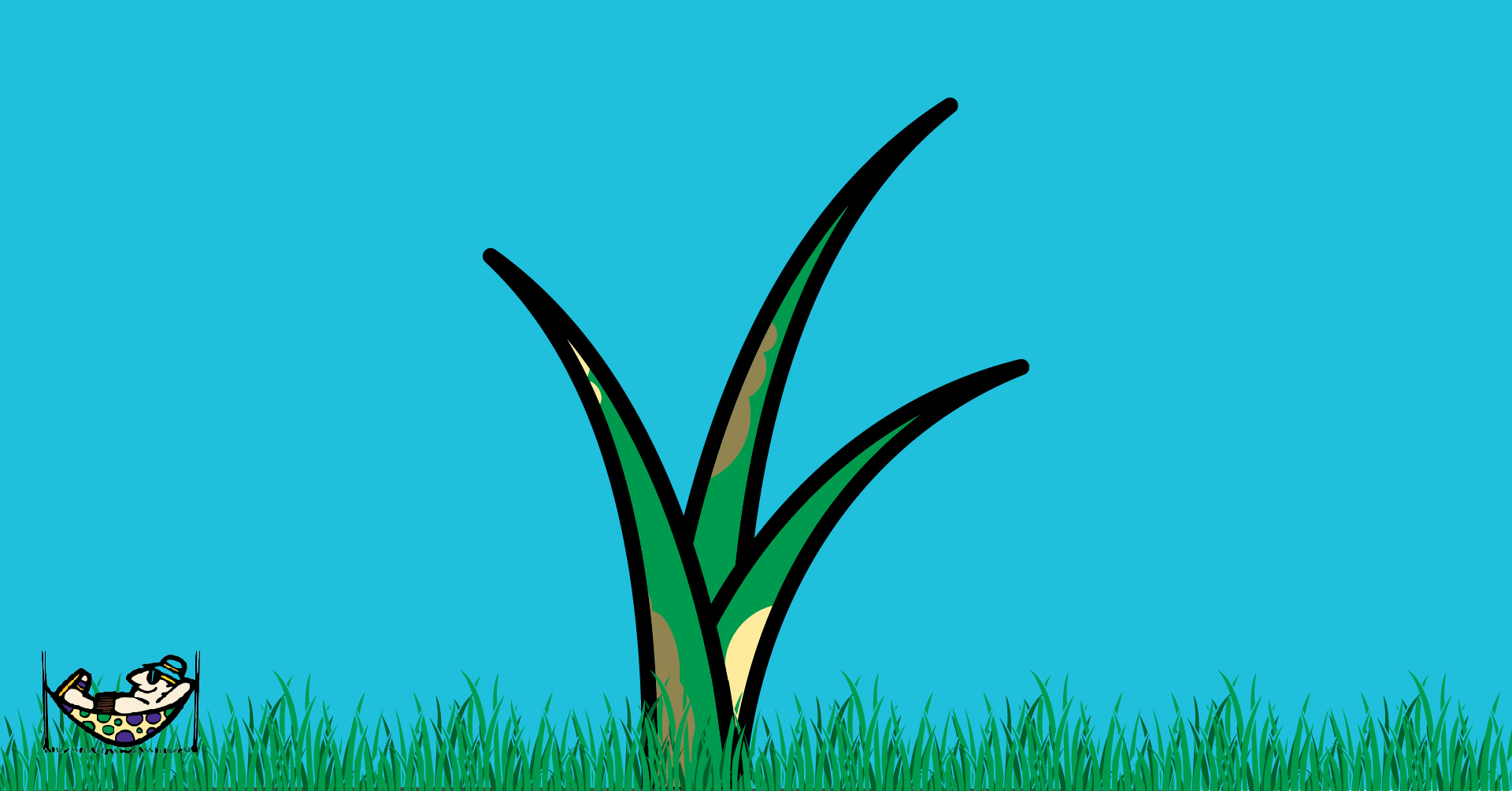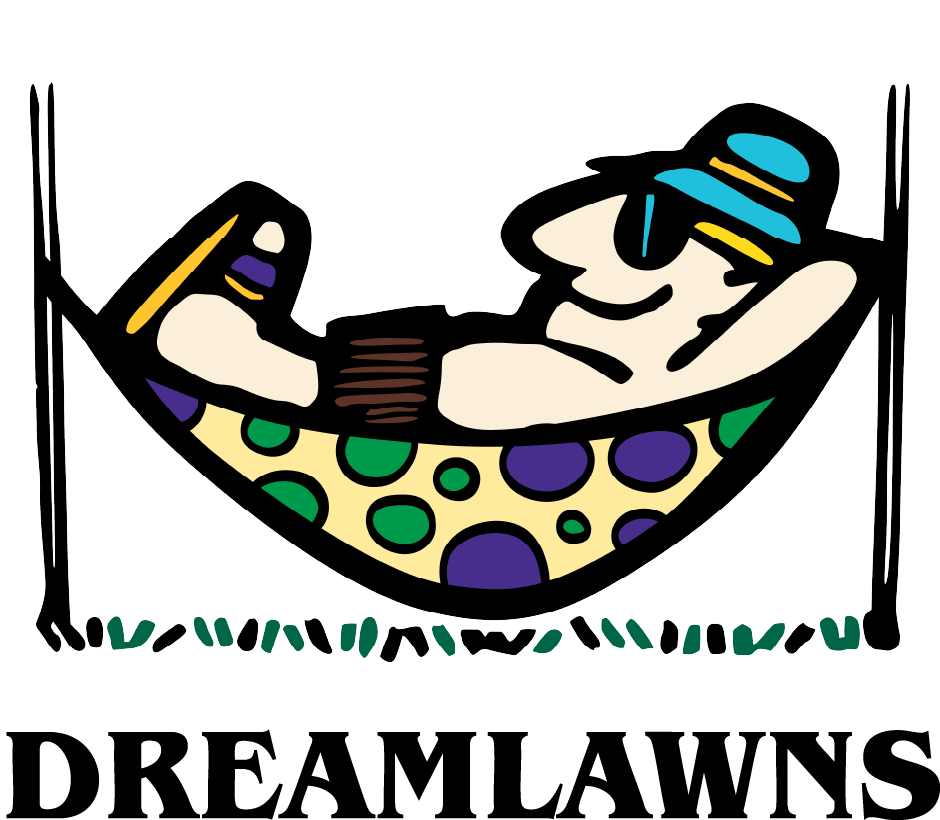
Lawns in Virginia Beach face specific challenges due to the area’s warm, humid climate, making them more susceptible to various diseases. Factors like excessive moisture, improper lawn care, and nutrient imbalances can contribute to the spread of fungal infections and other issues that affect lawn health. Understanding the most common lawn diseases in the area, such as Brown Patch, Grey Leaf Spot, and Dollar Spot, is essential for maintaining a healthy lawn. Lawn diseases are diagnosed by inspecting the turf for lesions, the pattern of the damage, the progression of symptoms, and considering the environmental conditions. Let’s explore these diseases and provide practical prevention and treatment tips to keep your lawn in top shape.
Brown Patch
Brown Patch is one of the most common lawn diseases in the Virginia Beach and Tidewater areas, primarily affecting cool-season grasses like fescue. This fungal disease thrives in hot, humid conditions, making the warm summer and early fall months the prime time for its appearance. The disease is typically identified by large, irregular patches of brown or tan lesions on the grass blades, often surrounded by a dark, smoke-colored ring.
Causes and Conditions
Moisture and Humidity: Brown Patch is driven by excessive moisture, particularly during hot weather. Overwatering, improper drainage, and high humidity create the perfect environment for this disease to spread.
Poor Air Circulation: Lawns with poor air circulation, such as those in densely landscaped areas, are more susceptible to Brown Patch.
Prevention Tips
Proper Watering: Water your lawn in the early morning to give the grass time to dry before nightfall. Avoid watering in the evening when moisture can linger and promote fungal growth.
Fertilization: Over-fertilization, particularly with high-nitrogen fertilizers, can exacerbate Brown Patch. It’s important to follow a balanced fertilization plan, focusing on the needs of your specific lawn type.
Mowing: Mow your lawn at the proper height, ensuring that grass blades aren’t cut too short, which weakens the turf and makes it more vulnerable to disease.
Treatment Options
Fungicides: If Brown Patch has already appeared, fungicides can be applied to control the disease. For best results, apply fungicide at the first sign of brown patches.
Aeration: Improving air circulation through aeration can help reduce moisture buildup in the soil and prevent the spread of Brown Patch.
Gray Leaf Spot
Gray Leaf Spot is a destructive lawn disease that primarily affects fescue and ryegrass, particularly in late summer to early fall. When conditions are optimal, this disease can quickly devastate turf, making it a serious concern for lawn health.
Causes and Conditions
Prolonged Moisture: Gray Leaf Spot thrives when the turf remains wet for extended periods, especially in humid weather.
Favorable Weather: The disease spreads rapidly in warm, wet conditions, posing a heightened risk during late summer rains.
Prevention Techniques
Proper Watering: Avoid overwatering your lawn, and water early in the morning to allow grass blades to dry throughout the day.
Improve Air Circulation: Regular aeration and mowing can improve airflow around the turf, reducing the chance of prolonged wetness.
Monitor Turf Health: Keep an eye on turf, especially after wet weather, to catch signs of disease early.
Treatment Options
Fungicides: Gray Leaf Spot can be controlled with a fungicide designed for this specific disease once identified. Applying it at the first sign of spots is crucial to prevent the disease from spreading.
Reduce Moisture: Improve lawn drainage and reduce moisture retention to create a less favorable environment for the disease to thrive.
Dollar Spot
Dollar Spot is another common lawn disease in Virginia Beach, particularly in areas with cool-season grasses. This fungal disease gets its name from the small, silver-dollar-sized patches of dead grass that it creates. Left untreated, these small spots can expand, resulting in large areas of discolored and thinning turf.
Causes and Conditions
Low Nitrogen: Lawns with insufficient nitrogen are more vulnerable to Dollar Spot. Nutrient-deficient grass is weaker and less able to fend off fungal infections.
High Humidity: Like Brown Patch, Dollar Spot thrives in high humidity, particularly during warm days and cool nights, making late spring through early fall its most active period.
Prevention Strategies
Balanced Fertilization: Maintain a regular fertilization schedule, ensuring that your lawn receives adequate nitrogen. A well-fed lawn is better equipped to resist fungal diseases.
Proper Watering: Water deeply but infrequently, aiming for early morning watering sessions to reduce prolonged leaf wetness, which encourages fungal growth.
Mowing Height: Avoid mowing your lawn too short. Keeping the grass at a healthy height allows it to retain more moisture and recover more quickly from any potential damage.
Treatment Methods
Fungicides: Applying fungicides specifically designed to combat Dollar Spot can help stop the disease from spreading. It’s best to apply them preventively if your lawn has a history of Dollar Spot.
Improve Air Circulation: Prune back trees and shrubs to promote better airflow around your lawn, which will help reduce moisture buildup and the potential for fungal growth.
Dollar Spot can weaken the overall appearance and health of your lawn, but with proper care and attention, you can prevent it from causing serious damage.
Pythium Blight
Pythium Blight is a fast-acting lawn disease that can severely damage turf, especially during periods of excessive moisture. This disease thrives in humid conditions and poor drainage areas, making it a significant threat to lawns in the Tidewater area.
Causes and Conditions
Excessive Moisture: Pythium Blight develops in areas with poor drainage and prolonged wet conditions, particularly during warm weather.
Overwatering: Lawns that are overwatered or experience heavy rain are more susceptible to this disease.
Prevention Techniques
Improve Drainage: Ensure that your lawn has proper drainage to prevent water from pooling. Consider aeration to improve soil structure.
Reduce Thatch: A thick thatch layer can trap moisture, making it easier for Pythium Blight to develop. Regular dethatching helps prevent the disease.
Water Early: Water your lawn early in the day to allow excess moisture to evaporate before nightfall.
Treatment Options
Fungicides: Pythium Blight requires immediate treatment with a fungicide designed to control this specific disease. Applying the fungicide at the first signs of disease can help limit its spread.
Aeration: Aerating the lawn allows better airflow to the soil, improving drainage and reducing the conditions favorable for pythium blight.
Red Thread
Red Thread is a common lawn disease in Virginia Beach that typically occurs in nutrient-deficient lawns, particularly those lacking nitrogen. The disease is named for the reddish-pink, thread-like structures that form on the grass blades, giving affected areas a distinct color and texture.
Symptoms and Causes
Nitrogen Deficiency: Lawns that don’t receive enough nitrogen are more prone to red thread. The disease is most active in cool, damp weather, typically in the spring and fall.
Fungal Growth: Red Thread thrives in lawns with high humidity and excess moisture, particularly during cooler periods when grass growth slows.
Prevention Through Proper Nitrogen Application
Fertilization: Ensuring your lawn has adequate nitrogen levels is the best way to prevent Red Thread. Fall is an excellent time to apply nitrogen-rich fertilizers, as it strengthens the grass and helps it resist diseases.
Regular Mowing and Watering: Keeping your lawn healthy with proper mowing and watering habits can also reduce the risk of Red Thread taking hold.
Treatment Solutions
Nitrogen-Rich Fertilizers: Applying a nitrogen-rich fertilizer is the most effective way to treat Red Thread. This will help the grass recover and outgrow the effects of the disease.
Fungicides: In severe cases, fungicides can be used to control Red Thread, although maintaining proper fertilization is usually enough to manage it.
Our Lawn Disease Prevention Tips Services
Preventing lawn diseases requires proactive and targeted care, particularly in the Tidewater area where humidity and moisture can create ideal conditions for fungal infections. Here’s how Dreamlawns can help you keep your lawn healthy.
Proper Fertilization and Nutrient Management
Balanced fertilization is critical to preventing nutrient deficiencies that can lead to diseases like Red Thread and Dollar Spot. We offer fertilization plans that provide your lawn with the right nutrients at the right time. Our fall fertilization services ensure your grass receives the nitrogen it needs to strengthen its root system. We apply about 70% of your lawn’s nitrogen needs between September and November, following a targeted fertilization schedule that promotes healthy growth and disease resistance. This approach helps protect your lawn from issues like Brown Patch, which often thrive in nutrient-deficient areas.
Aeration and Overseeding for Disease Prevention
Aerating your lawn is essential for preventing moisture buildup, which can lead to diseases such as Pythium Blight and Brown Patch. By improving soil structure and air circulation, aeration allows your lawn to breathe and absorb nutrients more effectively. We provide professional aeration services in the fall, creating the perfect conditions for overseeding as well.
Comprehensive Pest and Weed Control
Keeping pests and weeds in check is critical for disease prevention. Pests such as grubs can damage your lawn’s roots, weakening it and making it more susceptible to diseases. We offer pest control programs that not only target harmful insects but also ensure your lawn remains strong and vibrant.
We also focus on weed control and prevention to eliminate competition for nutrients. By maintaining a thick and healthy lawn through proper pest and weed control, your grass will be better equipped to resist common diseases like Red Thread and Dollar Spot.
Dreamlawns’ Customized Lawn Care Services
We offer year-round lawn care plans that are customized to your lawn’s specific needs. We understand the unique climate and soil conditions in Virginia Beach and tailor our services to address these challenges. From disease prevention to pest management and fertilization, our goal is to provide your lawn with the highest level of care.
Our team of experts works with you to develop a lawn care plan that focuses on long-term health. Whether you need seasonal aeration, targeted fertilization, or a comprehensive pest control solution, Dreamlawns has the experience and knowledge to keep your lawn looking its best all year round.
Work With Us
Maintaining a healthy lawn in Virginia Beach requires diligent care, particularly when it comes to preventing common diseases like Brown Patch, Dollar Spot, Pythium Blight, and Red Thread. By adopting proactive practices like balanced fertilization, proper watering, aeration, and pest control, you can significantly reduce the risk of these lawn diseases. Dreamlawns offers expert services designed to keep your lawn healthy year-round, tailored to the unique challenges of the Virginia Beach climate. Contact us today to ensure your lawn remains vibrant and disease-free all year round.
Dreamlawns provides superior lawn care service to Virginia Beach & Chesapeake VA residents.




